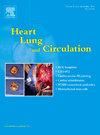肥胖和心房颤动:从机制到治疗。
IF 2.2
4区 医学
Q2 CARDIAC & CARDIOVASCULAR SYSTEMS
引用次数: 0
摘要
到2050年,预计全球将有38亿人超重或肥胖。随着肥胖负担的增加,心房颤动(AF)的发病率和患病率也在平行上升。肥胖通过几种途径促进房颤的发生,包括左心房重构、心外膜脂肪组织的积累、心脏负荷的改变、炎症的增加和肾素-血管紧张素-醛固酮系统的激活。与此同时,肥胖经常与合并症共存,并可能导致合并症,包括高血压、2型糖尿病和阻塞性睡眠呼吸暂停。在过去的十年中,研究表明,体重减轻可以减少症状性房颤的复发,因此,将合并症和危险因素治疗作为房颤患者护理的中心支柱。随着肥胖药物治疗时代的深入,新的机会将出现,以改善对房颤患者的护理。本综述总结了支持肥胖是房颤的主要危险因素的现有证据,并讨论了治疗肥胖和预防房颤在社区中日益增加的负担的治疗选择。本文章由计算机程序翻译,如有差异,请以英文原文为准。
Obesity and Atrial Fibrillation: From Mechanisms to Treatment
By 2050, it is projected that 3.8 billion people worldwide will be overweight or obese. Alongside this growing burden of obesity is a parallel rise in the incidence and prevalence of atrial fibrillation (AF). Obesity promotes the onset of AF through several pathways, including left atrial remodelling, accumulation of epicardial adipose tissue, alterations in cardiac loading, increased inflammation, and renin-angiotensin-aldosterone system activation. In parallel, obesity frequently coexists with and can contribute to comorbidities, including hypertension, type 2 diabetes, and obstructive sleep apnoea. The past decade has seen the introduction of comorbidity and risk factor treatment as the central pillar in the care of patients with AF based on studies showing that weight loss reduces the recurrence of symptomatic AF. As we move deeper into the era of pharmacological treatment for obesity, new opportunities will appear to refine the care of patients living with AF. This review summarises the existing evidence supporting obesity as a major risk factor for AF and discusses the therapeutic options to treat obesity and prevent the growing burden of AF in the community.
求助全文
通过发布文献求助,成功后即可免费获取论文全文。
去求助
来源期刊

Heart, Lung and Circulation
CARDIAC & CARDIOVASCULAR SYSTEMS-
CiteScore
4.50
自引率
3.80%
发文量
912
审稿时长
11.9 weeks
期刊介绍:
Heart, Lung and Circulation publishes articles integrating clinical and research activities in the fields of basic cardiovascular science, clinical cardiology and cardiac surgery, with a focus on emerging issues in cardiovascular disease. The journal promotes multidisciplinary dialogue between cardiologists, cardiothoracic surgeons, cardio-pulmonary physicians and cardiovascular scientists.
 求助内容:
求助内容: 应助结果提醒方式:
应助结果提醒方式:


